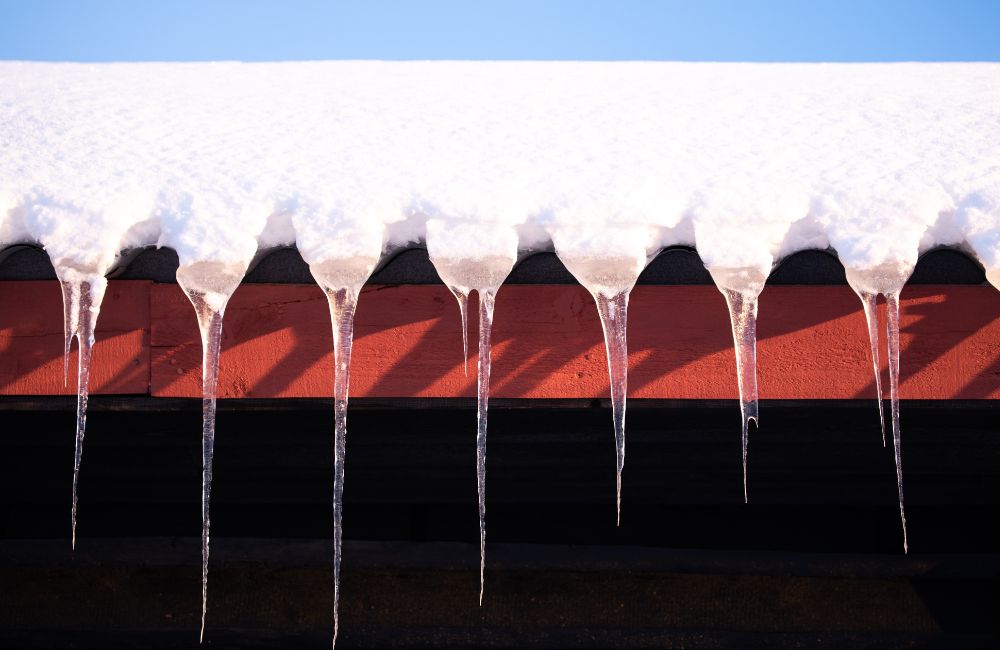Scheduling a professional roof inspection in Connecticut is one of the smartest investments a homeowner can make. Whether you live in New Hartford, Torrington, or throughout Litchfield and Hartford Counties, understanding how to prepare your home for this process ensures that the inspection is thorough and effective. With Connecticut’s unpredictable weather — from heavy snowfalls in winter to humid summers and frequent storms in spring and fall — roofs experience stress throughout the year. Preparing properly before the inspector arrives helps you get the most accurate assessment of your roof’s condition and prevents missed problem areas.
Preparing Access to Your Roof and Attic
One of the most critical steps in preparing for a roof inspection is ensuring clear access to the roof. Roofing professionals must evaluate your roof’s exterior and interior components.
Exterior Access: Trim back any overhanging tree branches or shrubs that block access to ladder points. Move vehicles, outdoor furniture, grills, and children’s toys away from the perimeter of your home so the contractor can safely set up ladders and equipment.
Interior Access: Unlock attic doors and clear storage items away from entry points. Inspectors often check ventilation, insulation, and signs of moisture inside your attic to obtain a comprehensive picture of your roof’s health.
Access Preparation Overview
- Exterior Yard: Clear vehicles, furniture, and debris. Allows safe ladder setup and inspection.
- Landscaping: Trim branches or mark sensitive shrubs. Prevents damage during inspection.
- Attic: Unlock entry and clear storage items. Ensures the inspector can evaluate ventilation.
Cleaning Gutters for Accurate Results
Gutters play a vital role in roof performance by directing water away from your home. Before the inspection, it is best to clear out any debris, such as leaves, sticks, or asphalt granules.
Blocked gutters can hide vital signs of roof deterioration. For example, if water is pooling in gutters or spilling over edges, it may indicate problems with drainage or the slope of your roof. By cleaning gutters beforehand, you provide the inspector with a clearer view of how water is moving off your roof — critical information for Connecticut homeowners who often deal with ice dams in winter and heavy rainstorms in spring.
Recording Past or Current Roof Issues
Homeowners often notice minor warning signs before calling a roofing professional. Taking the time to write these down ensures nothing gets overlooked.
Common issues to note include:
- Water stains on ceilings or walls
- Drafts or unusual temperature changes in upstairs rooms
- Shingles or flashing found on the ground after storms
- Unexplained musty odors coming from the attic
Sharing these details with the inspector helps them focus on potential problem areas. Even minor concerns may reveal underlying ventilation, insulation, or water penetration issues.
Protecting Landscaping and Outdoor Spaces
Roof inspections typically involve moving ladders, tools, and equipment around your property. Homeowners in towns like Avon, Bristol, and throughout Litchfield County can protect their landscaping by taking simple steps beforehand:
- Place tarps over flower beds or delicate shrubs to protect them from damage.
- Move potted plants away from the base of your home.
- Mark off areas you want the inspector to avoid.
Open communication with your roofing contractor also helps — they can plan where ladders and equipment will be placed, minimizing impact on your outdoor spaces.
What to Expect During and After the Inspection
A roof inspection is a detailed process that covers both surface-level and structural components. Most inspections include:
- Shingle Evaluation – Checking for curling, cracking, or missing shingles
- Flashing and Sealant Check – Ensuring all areas around chimneys, skylights, and vents are watertight
- Gutter Review – Confirming proper water drainage and checking for granule buildup that may indicate aging shingles
- Attic Assessment – Inspecting insulation, ventilation, and any signs of water intrusion or mold growth
After the inspection, most contractors provide a written report, accompanied by photographs and recommendations. This report is valuable not only for ongoing maintenance but also when planning future repairs or if you are considering selling your home.
Inspection Process Overview
- Shingles: Curling, cracking, missing, and granule loss — identifies aging or storm damage.
- Flashing/Sealants: Secure placement around chimneys and vents — helps prevent water intrusion.
- Gutters/Drainage: Blockages, overflow, and granule buildup — ensures water is directed away from the home.
- Attic: Moisture, insulation, and ventilation — reveals leaks and energy inefficiencies.
Why Roof Inspections Are Critical for Connecticut Homes
Connecticut’s climate exposes roofs to a wide range of stressors: snow and ice in winter, heavy spring rains, hot and humid summers, and high winds in fall. Regular inspections enable homeowners in Litchfield County, Hartford County, and surrounding areas to address minor issues before they escalate into expensive repairs.
Beyond cost savings, a properly maintained roof helps preserve your home’s value and ensures a safe, comfortable environment for your family. Whether you live in New Hartford, Torrington, Bristol, or another nearby town, preparing for a professional inspection provides peace of mind and long-term protection for your home.
FAQs
How often should I schedule a roof inspection in Connecticut?
At least once a year, ideally in the spring or fall, and always after severe weather events, such as hailstorms or heavy snowfall.
Do roof inspections include the attic?
Yes. The attic is a crucial part of the inspection, as it reveals ventilation issues, water intrusion, and insulation problems.
What’s the best season for inspections in Connecticut?
Spring and fall are ideal. These seasons allow contractors to identify damage from the previous season and prepare your roof for the upcoming weather.
How long does a typical inspection take?
Most inspections take 1–2 hours, depending on the size and complexity of the roof.
Will I receive a written report after the inspection?
Yes, reputable contractors provide written or digital reports with photos that outline any concerns and recommend next steps.
Can Elite Roofing help if my inspection reveals damage?
Absolutely. Elite Roofing CT specializes in roof repair, roof replacement, and roof maintenance for Connecticut homeowners.
Contact Elite Roofing CT
With over 15 years of experience, Elite Roofing CT specializes in durable, energy-efficient roofing solutions, including inspections, maintenance, repairs, and replacements. Serving New Hartford, Litchfield County, and the greater Hartford area, we are committed to helping Connecticut homeowners protect their investment with expert roofing services.




